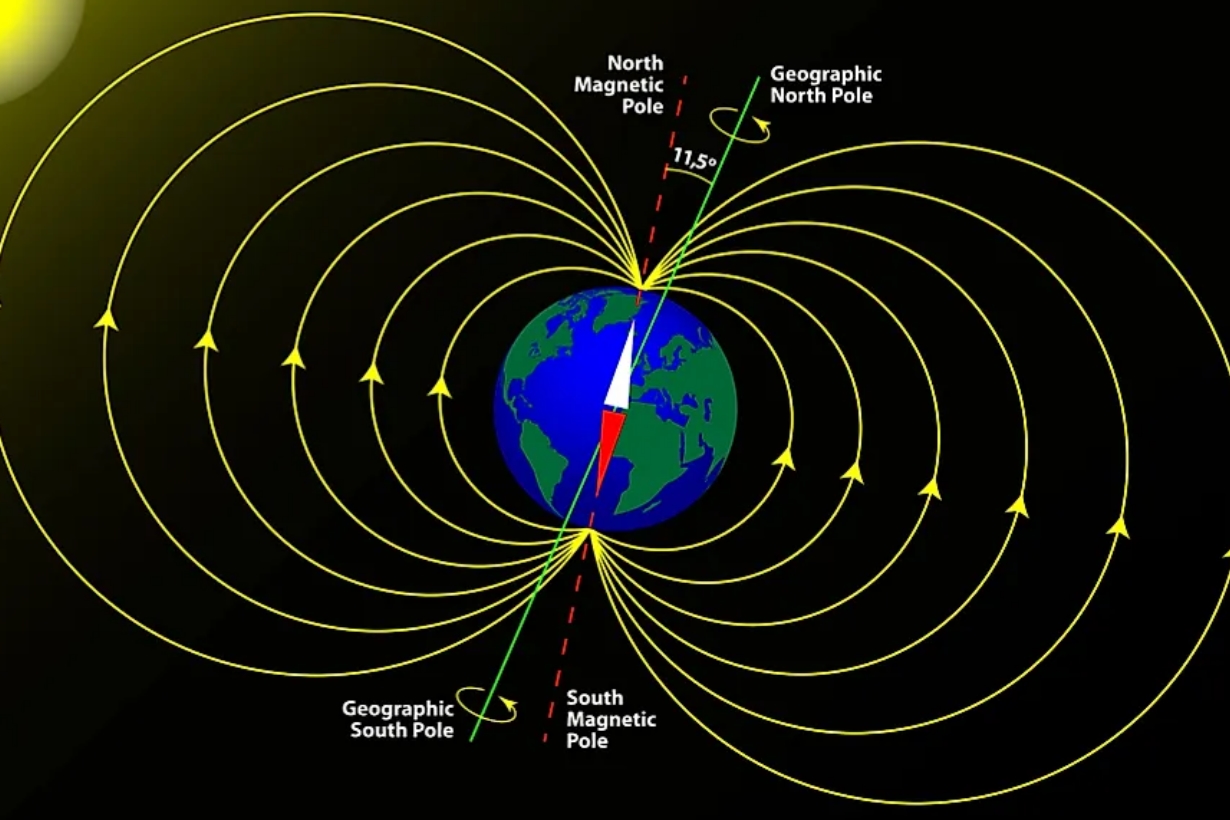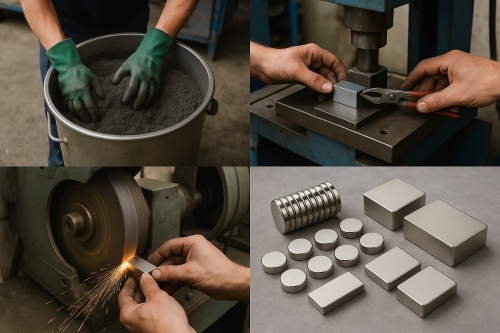Manufacturing Methods of Alnico Magnets
Alnico (Aluminum-Nickel-Cobalt) magnets are permanent magnets primarily consisting of a combination of aluminum, nickel, and cobalt. But they are also often made up of other elements, such as copper, iron, and titanium. But the exact chemical composition of an Alnico magnet depends on the grade of the magnet being produced. In other words, different grades have varying compositions of these chemical elements. Alnico magnets are one of the most important permanent magnets used in various essential applications. They are made by either the casting method or the sintering process and are available in either isotropic or anisotropic forms.
How Are Alnico Magnets Produced?
Alnico magnets can be manufactured in either of two ways: by sintering or more commonly, by using the casting process. Alnico magnets produced by casting have a higher density and mass. This gives them better magnetic properties and performance. However, a more economical way to produce Alnico magnets is by sintering. The casting process involves pouring a molten mixture of aluminum, nickel, and cobalt into a mold, which is typically made of resin-bonded sand. Iron, copper, or titanium is added to enhance the magnetic characteristic of the cast Alnico magnets produced by this technique. Discussed below are further details on the cast and sintered Alnico magnets and their different production methods. It’s important to note that large Alnico magnets weighing tens of kilograms are almost always produced by casting. Small Alnico magnets that weigh a few grams or kilograms are, on the other hand, produced using the sintering process. But when a high volume of magnets is needed, the sintering technique is generally engaged.
Further Reading: Cast AlNiCo Magnets Vs. Sintered AlNiCo Magnets

Production of Cast Alnico Magnets
Cast Alnico magnets are mostly produced in seven different processes as follows:
1. Foundry Furnace
The selected compositions of aluminum, nickel, cobalt, and iron for the grade to be manufactured are placed in an induction furnace and melted at over 1750°C. Extra aluminum may be added to compensate for the quantity wasted when the mixture melts at a much lower temperature. During the melt and before casting, the exact composition of the mixture can be confirmed by analyzing a sample using an x-ray spectrometer
2. Casting
At this second stage, the molten material is poured into a shell mold and allowed to cool. As the metal cools, the shell molds start to burn such that when the magnets are cold, the shell is almost disintegrated. The shell mold is made using a pattern plate and a molding machine. The patterns are made to have a similar size to the required magnet size though with extra allowance for shrinkage and machining to size.
3. Fettling
By this time, the magnets are cast and can be extracted from the molds, after which they are fettled on grinding wheels to remove the runner gates.
4. Heat Treatment, Hardening, and Grinding
The next step involves heating the magnets to a very high temperature and placing them into magnetizers. This will allow the magnets to start cooling down in the presence of a very strong magnetic field. This is also known as hardening the magnets. By placing the magnets in a large tempering oven for a few days, they will eventually stabilize. Next is to subject the magnets to finish-grinding to tight tolerances.
5. Testing
Alnico magnets produced this way are tested with a hysteresis graph testing machine, gauss meter, or flux meter.
6. Coating
If the manufacturer or user desires a specific paint or color on the magnets, this is the stage to add a coating on them. Usually, the poles of the magnets may be fettled to make them bright and shiny.
7. Magnetizing
Finally, the magnets are inserted into a coil or solenoid magnetizer. This allows the electrical pulse to generate the necessary electrical field needed to fully magnetize the cast alnico magnets.
Production of Sintered Alnico Magnets
This is done in the following steps:
Pressing
The first step in producing sintered Alnico magnets is grinding the raw elements into tiny particles. The finely-ground magnetic materials are then subjected to pressing under tonnes of pressure in a die, in a shape that closely resembles the desired shape for the magnet.
Sintering
The actual sintering is done after the powder has been pressed. This is done in a furnace in a hydrogen atmosphere at over 1200°C. The sintering process helps to fuse all the pressed particles, forming one magnet.
Cooling
The heated magnetic material is then cooled. If it is cooled in the presence of an external magnetic field, it will have anisotropic properties, that is, a preferred magnetic direction. Anisotropic Alnico magnets have better magnetic properties. But if an external magnetic field is not used in cooling the red hot material, the magnet obtained will be isotropic without a specific direction of magnetism.
Coating the magnets
In most cases, when sintered Alnico magnets are cooled, they do not require further shaping or machining because the die used in the pressing stage has a shape closely resembling the desired magnet shape. But the manufacturer can decide to use a specific coating. The poles of the magnets, as with cast alnico magnets, may also be fettled to leave them bright and shiny.
Magnetizing
Finally, the machined magnetic material is magnetized by placing it inside a coil or solenoid magnetizer. This allows the electrical pulse to generate the necessary electrical field needed to fully magnetize the cast alnico magnets.
Conclusion
Alnico magnets are manufactured by either casting or sintering methods. While sintering is a more economical approach, cast Alnico magnets have stronger magnetic properties. Also, the grades of the magnets vary widely, depending on the composition of the chemical components. For more information, please visit https://www.stanfordmagnets.com/.















